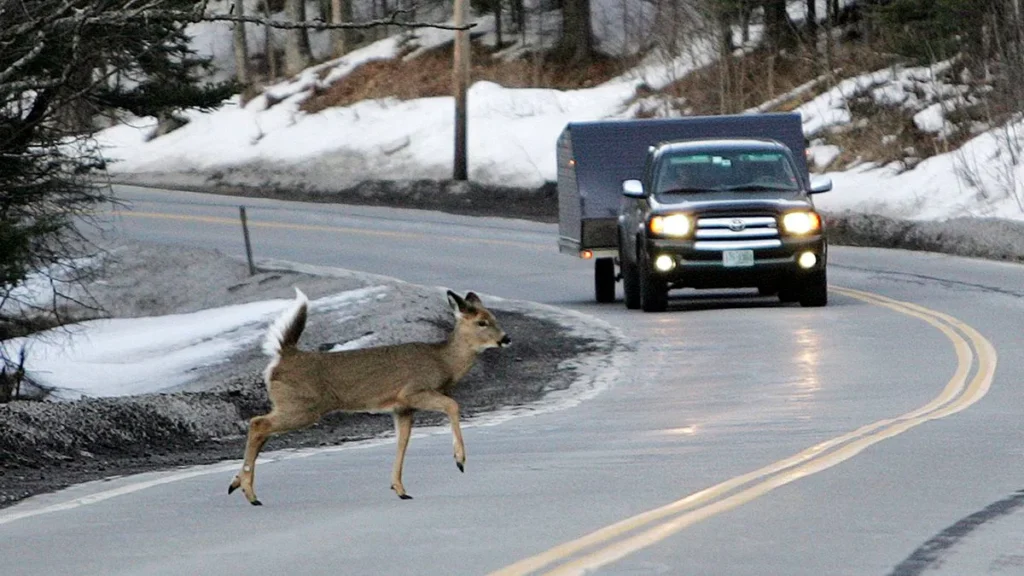Animals on the road can be one of many unpredictable situations that drivers face. .
Wildlife can cross roads with vehicles in urban and rural areas, which poses a risk to human safety as well as animal safety
This discussion will explore the dangers posed by wildlife on the roads, as well as the possible consequences of collisions and the need to adopt responsible driving habits in order to reduce these risks.
Dangers posed by animals on the roads
1. Wildlife encounters are unpredictable. They can appear out of nowhere, darting along roads looking for food, shelter, or mates. The unpredictable nature of wildlife is heightened at dawn and dusk, when they are most active. Drivers should be aware of deer, squirrels and raccoons. Even larger animals, such as moose, bears or wolves, can surprise them.
2. Accidents between animals and vehicles can result in severe injuries or deaths for the animal. Collisions can cause serious injury or death to animals, while drivers or passengers can also suffer fatal injuries. This is especially true when it comes to larger animals. These incidents may also result in significant vehicle damage, causing financial and psychological stress for those involved.
3. Factors of Risk in Different Environments : There are different factors that influence the risk associated with encountering wildlife on roads. Wildlife crossings are common in rural areas, especially those with large forests and open fields. However, even urban areas can be affected. Smaller animals, such as cats and dogs, can pose a threat in areas with dense populations. It is important for drivers to understand the risks associated with various environments in order to take a proactive approach when it comes to encountering wildlife.
4. To reduce the risk of animals crossing the road, it is important to practice responsible driving. Drivers can react faster if they slow down when in an area where wildlife is known to be active, particularly at dawn or dusk. Staying vigilant, especially in places with signs warning of wildlife crossings, can help drivers anticipate potential hazards.
5. A greater awareness of wildlife habitats. Certain places are more likely to encounter wildlife due to their proximity to natural environments. Mountains, forest areas, and places near water bodies are common hotspots where wildlife crosses paths. In these areas, drivers should be extra vigilant, as animals could appear at any time. Adhering to speed limits and using extra caution in wildlife areas can reduce collisions.
6. Animal detection technologies have been developed in certain vehicles due to advancements in automotive technologies. The systems identify wildlife near or on the road using radar and infrared cameras. They then alert the driver to any danger. These technologies are not 100% foolproof but they do provide an extra layer of safety, particularly in conditions with low visibility or animals that can be difficult to see.
7. In wildlife zones where it is known that animals frequent the area, speed limits are often reduced. It is important to adhere to the posted speed limits, not just because it’s legal but also for safety reasons. Drivers have more time to react when animals suddenly appear and can avoid collisions. Drivers who are responsible know that they must adapt their speeds to road conditions, which include the presence of animals.
8. Signage and roadway design: When wildlife is a risk, signage and the roadway can be crucial in preventing accidents. Drivers are alerted to possible risks by warning signs that indicate wildlife crossing zones, particularly those featuring images of certain animals. In addition, overpasses and wildlife corridors that facilitate animal crossings are designed to reduce road encounters.

9. There are also ethical concerns when encountering an animal on the road. Drivers are encouraged to show empathy by recognizing the importance of animals in maintaining an ecological balance and avoiding harming them. In order to be a responsible driver, drivers must commit themselves to living in harmony with animals and minimizing the effects of their activities on habitats.
10. Reporting Collisions and Reacting: If you have an unfortunate collision with a wild animal, it is important that you immediately report this to the local authorities. The reporting of collisions between vehicles and animals allows agencies for wildlife conservation to gather data. This helps them identify areas at high risk as well as implement mitigation strategies. Drivers should also be cautious when approaching animals that are injured, since they can pose a risk. If necessary, contact a local wildlife rescue organization.
Conclusion
Driving with animals on the road can be a challenge for drivers. It requires a mix of knowledge, ethical practices and responsible driving. Understanding the unpredictable nature of wildlife encounters and recognizing the risk factors can help drivers minimize the dangers associated with animals on the road. They should also adopt proactive measures, such as adjusting speed, using technology to detect animals, or adhering to signage. Responsible driving is essential to ensuring the safety of humans as well as the wildlife that shares our roads.
